Hummingbirds, tiny, vibrant, and ceaselessly energetic, are a charming sight that brings joy to many gardeners.
These colorful creatures, known for their rapid wing flaps and unique hovering ability, can add a dynamic beauty to your outdoor space.
If you want to invite these delightful visitors into your garden, this comprehensive guide, broken down by USDA Hardiness Zones, can assist you in creating the ideal hummingbird-friendly habitat.
Bonus: At the end of this article, we’ve added a section, “Creating a Hummingbird-Friendly Environment,” that includes feeding information and a recipe for hummingbird food. Enjoy!
USDA Zones 3-4:
Gardening in the colder regions of Zones 3 and 4 can pose challenges.
However, it doesn't mean you cannot enjoy the beauty of hummingbirds in your garden.
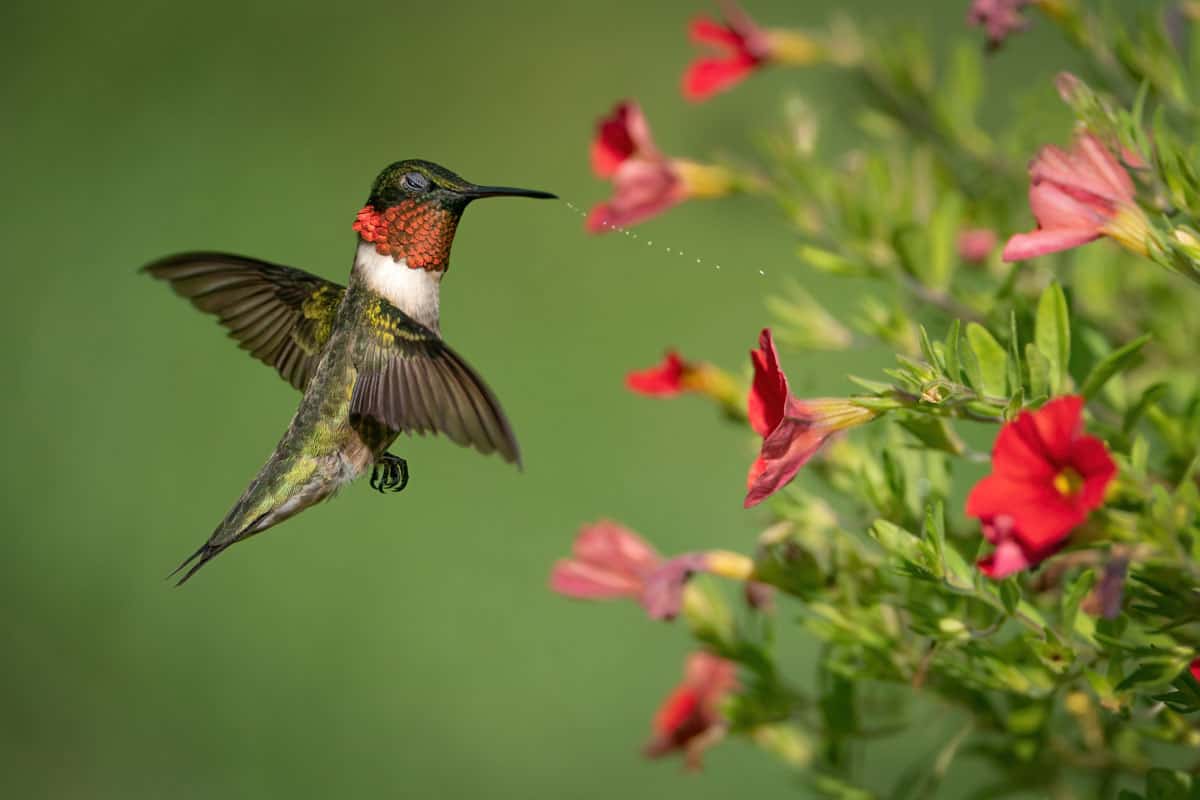
The ruby-throated hummingbird is the most frequent visitor in these zones.
To attract hummingbirds in Zones 3-4, focus on plants that thrive in colder climates.
Red columbine (Aquilegia canadensis) is an excellent option with its early spring blooms, followed by the trumpet honeysuckle (Lonicera sempervirens) that flourishes in early summer.
These plants not only tolerate cold but are also favored by hummingbirds for their tubular flowers that are rich in nectar.
Along with these plants, maintain a hummingbird feeder filled with nectar. Ensure you clean and refill it every few days to provide a fresh and healthy food source.
USDA Zones 5-6:
Zones 5 and 6 host various hummingbirds, including the ruby-throated and the migratory rufous hummingbirds.
The warmer climate in these zones allows more plants to thrive.
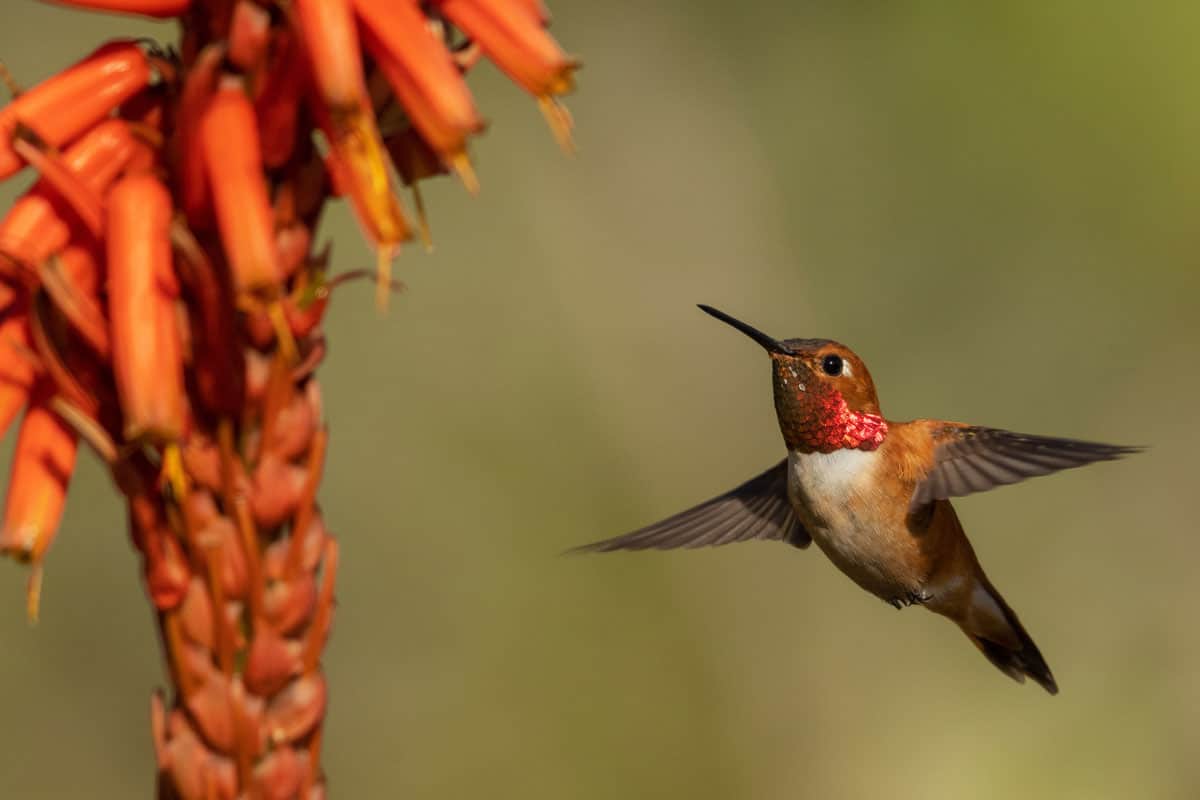
Try adding bee balm (Monarda) to your garden, whose bright colors and rich nectar delight a hummingbird.
Foxglove (Digitalis), with its tall spikes of tubular flowers, is another hummingbird favorite.
Trumpet vine (Campsis radicans), with its trumpet-shaped blooms, is also a hit.
Along with these plants, maintain a hummingbird feeder filled with nectar. Ensure you clean and refill it every few days to provide a fresh and healthy food source.
USDA Zones 7-8:
The moderate climate of Zones 7 and 8 makes them ideal for gardening and birdwatching.
Ruby-throated, black-chinned, and rufous hummingbirds are frequent visitors.
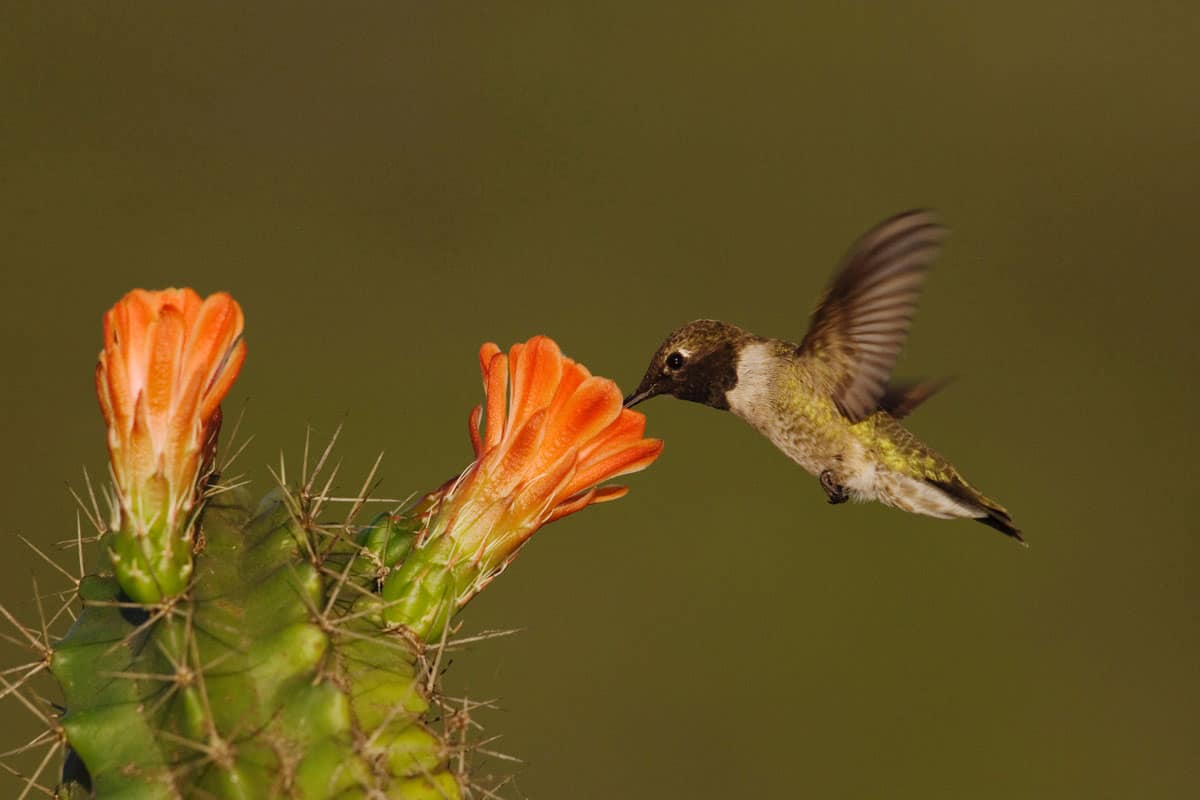
To attract them, consider planting scarlet sage (Salvia coccinea), which offers red, tubular flowers—a hummingbird favorite.
Cardinal flower (Lobelia cardinalis), another hummingbird magnet, also flourishes well in these zones.
You can also consider planting native azaleas (Rhododendron spp.), whose vibrant flowers and rich nectar can attract various hummingbirds.
Remember that hummingbirds seek not only food but also water.
Providing a water source, such as a shallow birdbath, mister, or drip fountain, can make your garden even more appealing to these tiny birds.
USDA Zones 9-10:
Gardening in Zones 9 and 10 has the advantage of attracting hummingbirds nearly year-round. Anna's, Costa's, and black-chinned hummingbirds are common visitors.
The diversity of plant life in this warm climate makes it easier to create a hummingbird-friendly garden.
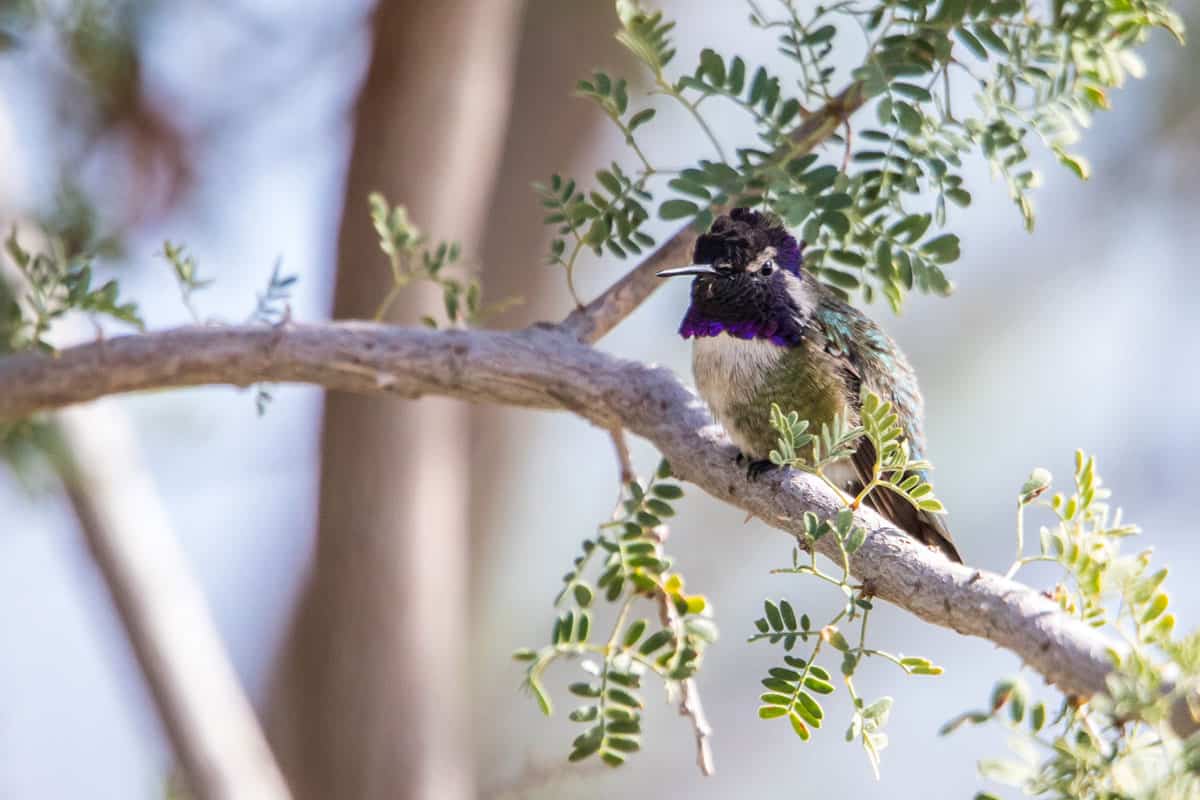
Coral honeysuckle (Lonicera sempervirens) with its coral-red flowers, bottlebrush (Callistemon spp.), known for its brush-like, vibrant flowers, and a variety of salvia plants can serve as excellent nectar sources.
Apart from natural nectar, hummingbird feeders are crucial in attracting and supporting hummingbirds, especially in winter when flowers may be less abundant.
USDA Zones 11-13:
In the warmest Zones 11-13, hummingbird activity can continue all year.
You can often see Anna's, Costa's, and Allen's hummingbirds.
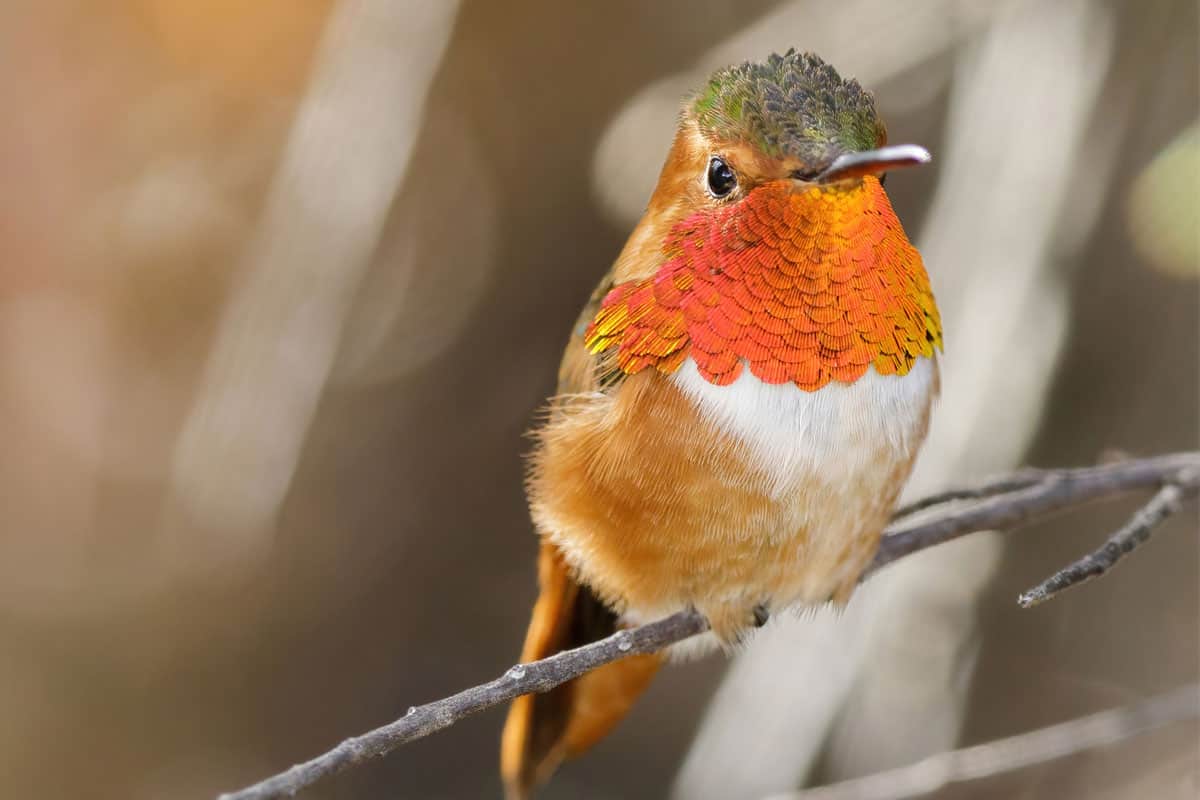
Planting hummingbird bush (Anisacanthus quadrifid var. wrightii), red hot poker (Kniphofia uvaria), and agave can offer ample nectar to these frequent visitors.
With the year-round warmth, maintaining a constant supply of nectar through feeders is crucial to support the hummingbird population.
Bonus: Creating a Hummingbird-Friendly Environment
Regardless of the zone you live in, several key factors can make your garden more inviting to hummingbirds:
Provide food: Both native, nectar-rich flowers and hummingbird feeders play a crucial role in serving hummingbirds.
The high-energy diet these tiny birds require is obtained mainly from nectar and sugar solution.
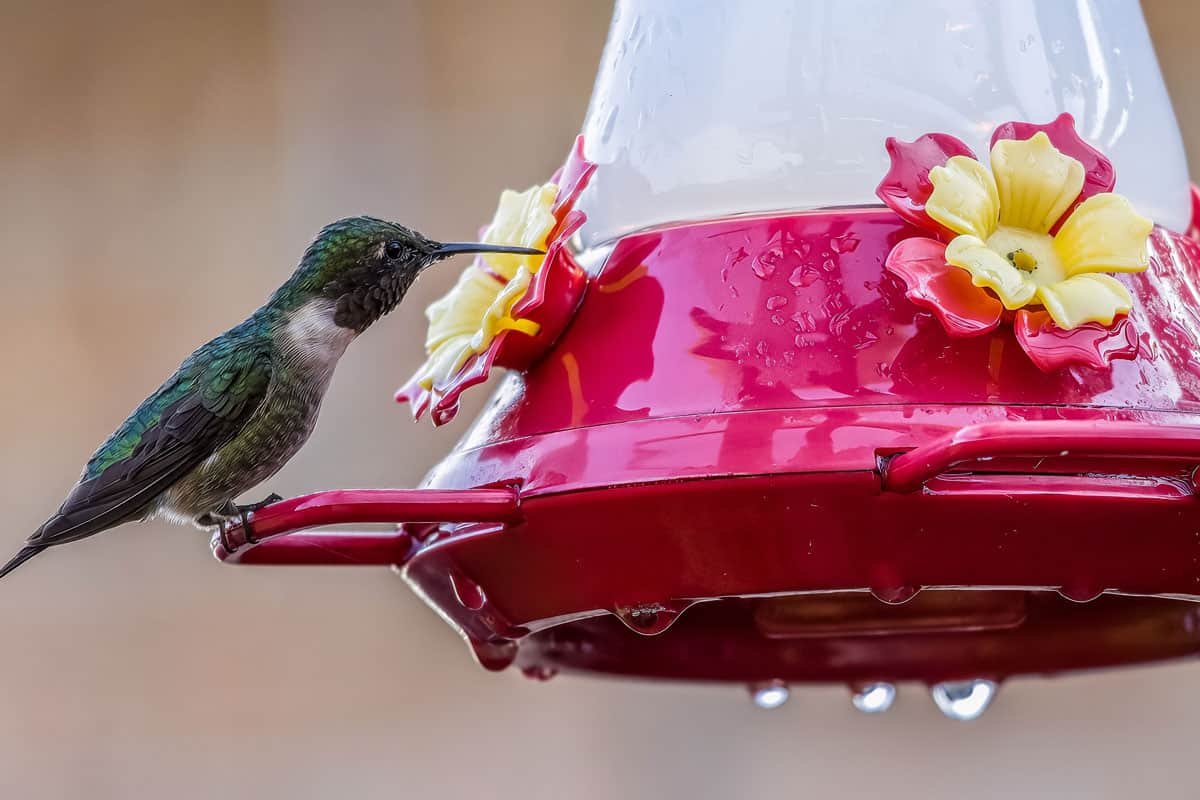
Ensuring hummingbirds have a proper diet is crucial for their survival, and understanding what to feed them is a key part of this process.
Hummingbirds need a high-energy diet to sustain their rapid metabolism. The nectar they get from flowers and hummingbird feeders provides this energy in the form of sugar.
It's a common myth that hummingbird nectar should be colored red with food dye.
The truth is, adding red dye to hummingbird nectar is unnecessary and can potentially harm the birds.
Although commercial hummingbird food often contains red dye to attract hummingbirds, many experts and birding organizations advise against it.
The red dye doesn't add any nutritional value for the birds, and its effects on their health are still not fully understood.
Some studies suggest that certain food dyes could harm hummingbirds, causing issues like kidney damage and even hampering reproduction.
If you want to attract hummingbirds with the color red, a better strategy is to use a feeder with red parts.
Hummingbirds are attracted to bright colors, especially red. Red on the feeder can draw them in without the potential risks associated with red dye in their food.
As for commercial hummingbird food, it can be a convenient option, but it's not necessarily better than homemade nectar.
As mentioned, many commercial foods contain preservatives and added coloring, potentially harming hummingbirds.
Using only white granulated sugar and water is important when making homemade hummingbird nectar. The reason is that white sugar most closely simulates the chemical composition of natural nectar.
Avoid using other types of sugar, such as brown sugar, honey, or artificial sweeteners.
Brown sugar contains molasses, which can be harmful to hummingbirds. Honey can ferment quickly and potentially cause deadly fungus growth.
Artificial sweeteners, however, don't provide the necessary calories that hummingbirds need.
Here's a simple recipe to make homemade hummingbird nectar:
Ingredients:
- 1 part white granulated sugar
- 4 parts water
Instructions:
Boil the water: This helps dissolve the sugar more easily and can kill any potential bacteria or mold in the water or sugar.
Dissolve the sugar in the boiled water while it's still hot. Stir the solution until the sugar is completely dissolved.
Allow the solution to cool before filling your hummingbird feeder.
Store any excess solution in the refrigerator. It can be stored for up to a week.
Remember to clean your feeder and replace the nectar every few days, especially in warm weather, to prevent the growth of harmful mold and bacteria.
Offer water: Hummingbirds, like all birds, need water.
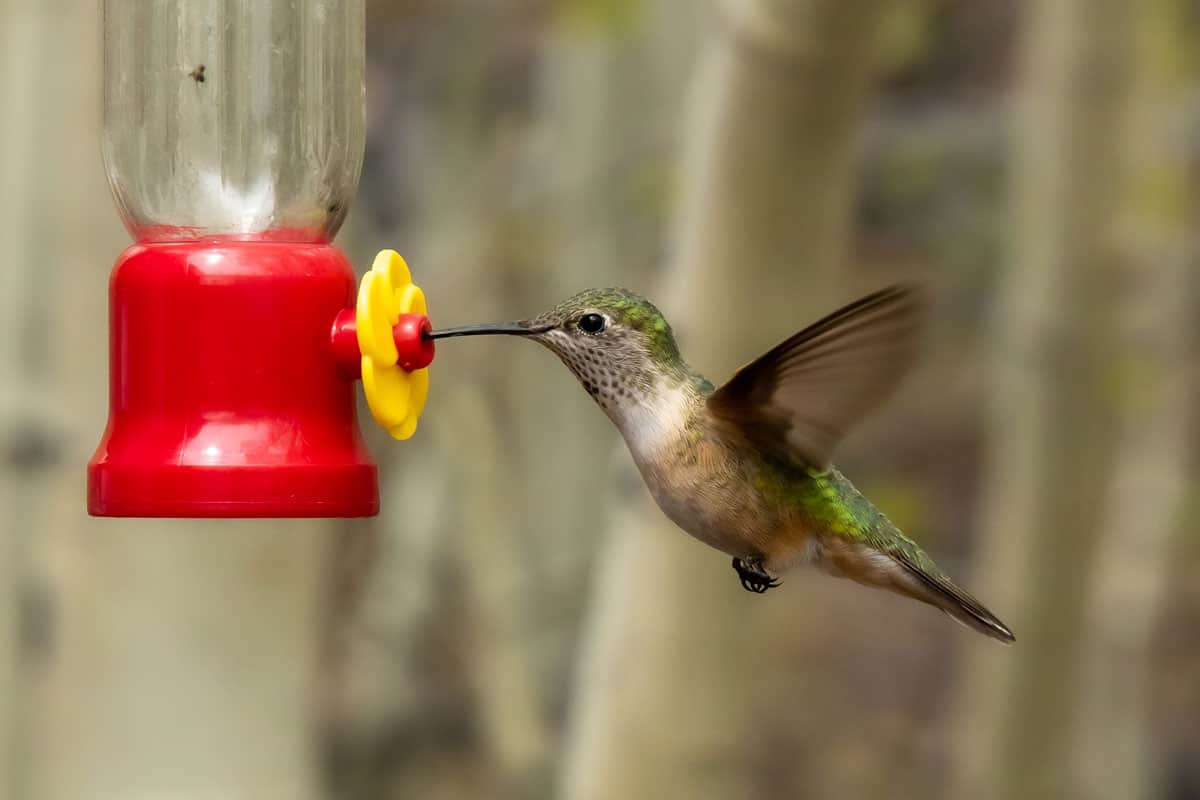
A shallow birdbath or a water fountain with a gentle spray will provide them with drinking water, and the water spray can also attract hummingbirds from afar.
Plant native species: Native plants and hummingbirds in a particular area have evolved together, and hence, these plants tend to provide the perfect nectar for local hummingbird species.
Avoid pesticides: Pesticides can directly harm hummingbirds and kill insects, an essential part of the hummingbird diet.
Provide perches: Despite their ceaseless activity, hummingbirds need to rest. Providing perches like shrubs and trees can give hummingbirds a much-needed break.
A Rewarding Experience
Taking the time to welcome and care for hummingbirds in your USDA Zone can be a rewarding experience.
Watching hummingbirds can bring joy to any location, thanks to their brightly colored plumage, flight antics, and unique nest-building techniques.
With this guide, you’re well on your way to attracting these remarkable birds.
Before you go, be sure to take a look at these other articles you might find helpful:
Does Portulaca Attract Hummingbirds?
25 Fabulous Pollinator-Friendly Perennials
Watch This Rare Footage of a Hummingbird Mother Protecting Her Egg in a Rainstorm
